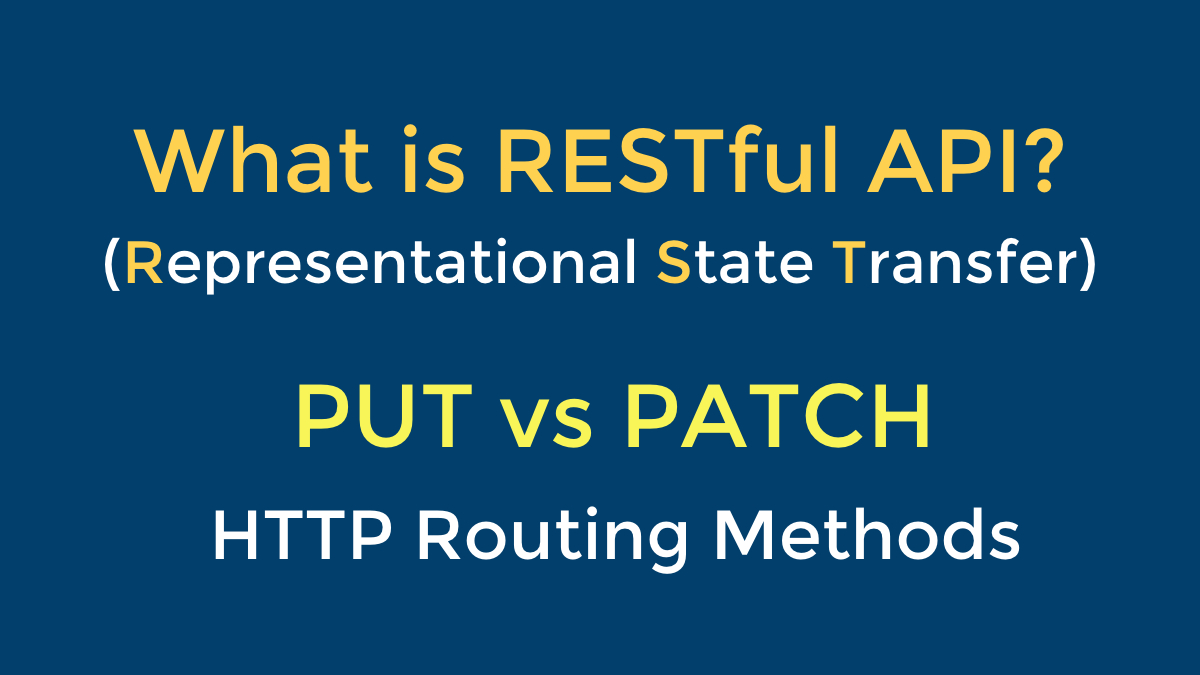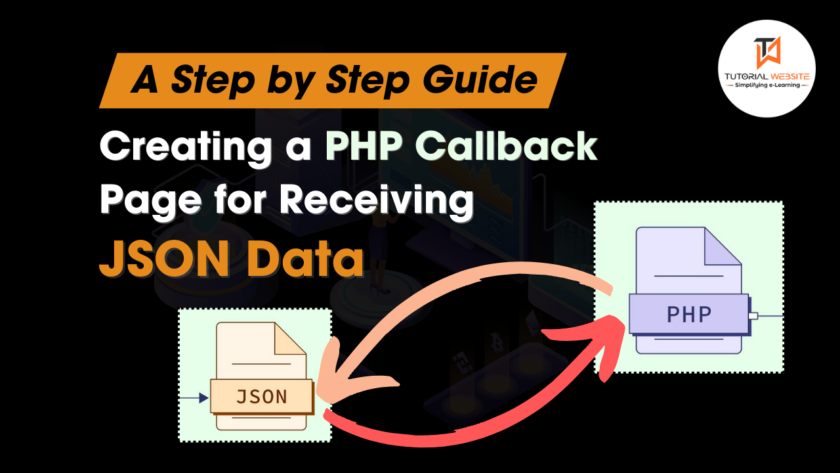The RESTful API or REST (Representational State Transfer) API is an easy way to handle communication between individual systems as different as smartphones and other low overhead websites. It is an application program interface (API) that uses HTTP requests for GET, PUT, POST, and DELETE data.
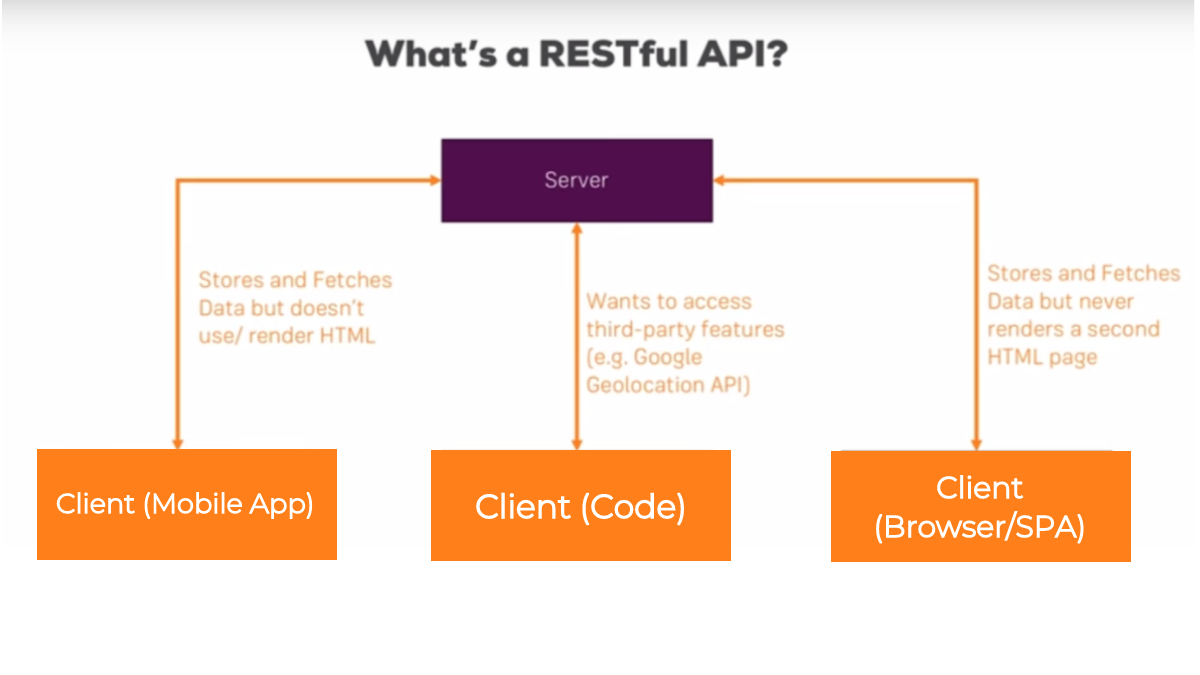
The RESTful API—also known as a RESTful web service —is based on Representation State Transfer (REST) technology, an architectural design, and an interactive approach often used in the development of web services.
Also Read: What are Web Services?
Method to Routing Data Using RESTful API (Routing Methods)
1. GET – Read
GET is the simplest type of HTTP request method; the one that browsers use each time you click a link or type a URL into the address bar
2. POST – Create
POST is always for creating a resource (it does not matter if it was duplicated ).
3. PUT – create or update
PUT is for checking if the resource exists then update, else create a new resource
4. PATCH – Update
PATCH is always for update a resource
5. DELETE – Delete
DELETE is pretty easy to understand. It is used to delete a resource identified by a URI.
Difference Between PUT and PATCH Requests
PUT and PATCH are HTTP verbs, which are both related to updating the database.
The key difference between PUT and PATCH requests is the way the server handles the enclosed entity to modify the resource identified by the Request-URI.
Suppose we have a resource that holds the first name and last name of a person.
If we want to change the first name but not last name then we send a request for Update with
PUT Request
{ "first": "Michael", "last": "Angelo" }
With PUT request, we have to send both parameters first and last. although we are only changing the first name.
In other words, it is mandatory to send all values again, the full payload.
PATCH Request
{ "first": "Michael" }
With the PATCH request, we only send the data which we want to update. In other words, we only send the first name to update, no need to send the last name.
For this reason, the PATCH request requires less bandwidth.
How RESTful APIs work?
The RESTful API specifically takes advantage of the HTTP methodologies specified in the RFC 2616 protocol. We use GET to retrieve a resource; PUT to modify the state of or update a resource that can be an object, file or block; POST to create that resource, and DELETE to delete that resource.
The RESTful API breaks down a transaction to build a set of small modules. Each module addresses a specific part of the transaction. This modularity offers programmers a lot of flexibility, but it can be difficult for developers to build from scratch.
Let’s see the below architecture layout to understand the working functionality of RESTful API.
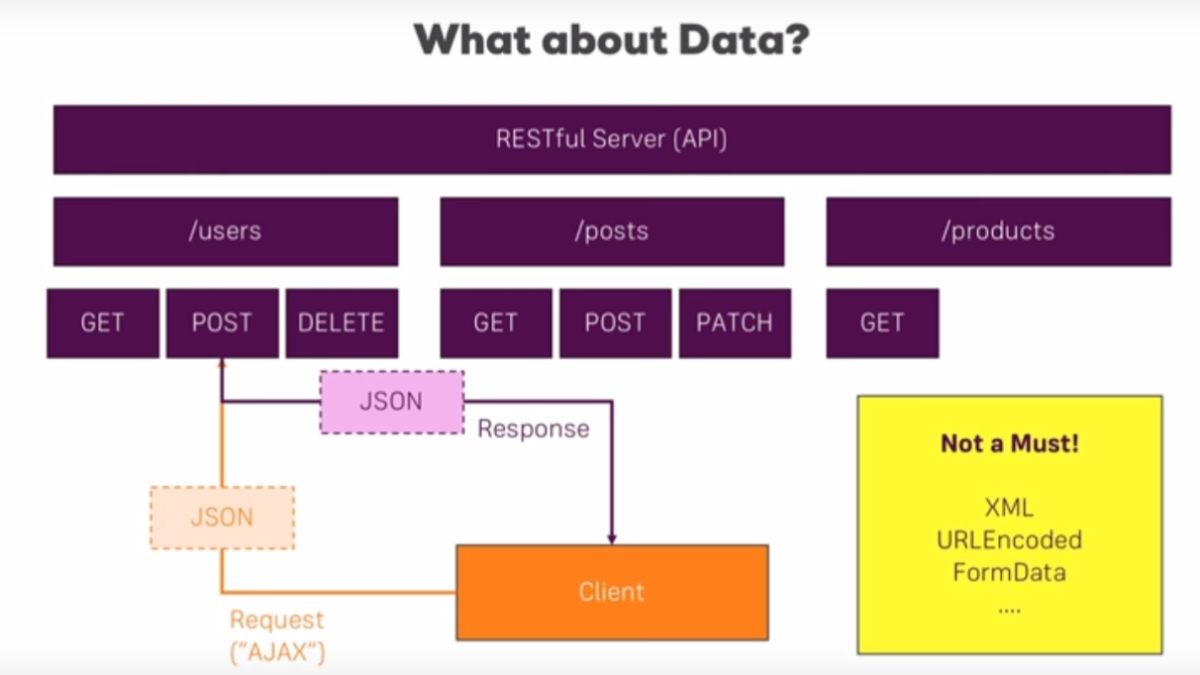
Here you can see, Client is sending AJAX request with JSON Data using POST Method over the network or API “/users”. After getting successful status from the server, the client is receiving JSON Response.
- “/users” – It is the REST API
- POST – It is the method that we used to connect using API to Server.
With REST, connected components are a network that you request access to — a black box whose implementation information is undefined. The expectation is that all calls are stateless; nothing can be preserved in the RESTful service between executions.
RESTful API Design and Architecture Constraints
In order to be a valid RESTful API, a web service must follow the rules with the following six architecture and design constraints:
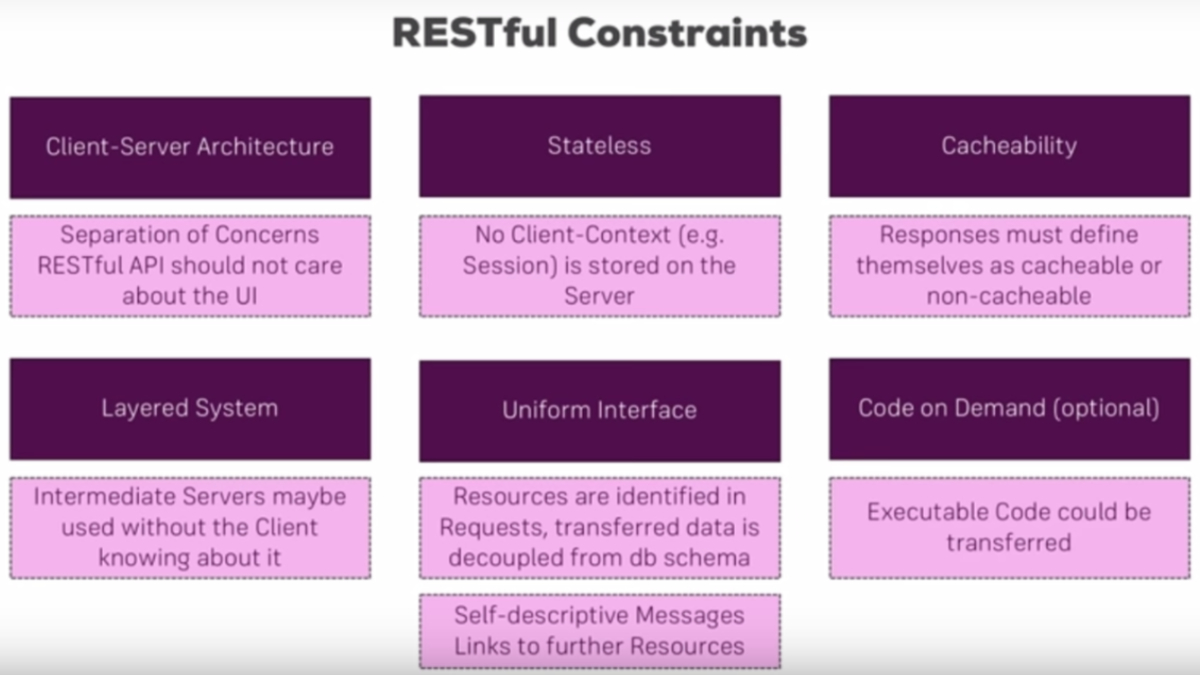
REST vs. SOAP
REST and SOAP provide various methods of invoking a web service. REST is an architectural style, while SOAP defines a basic communication protocol specification for XML-based communication. SOAP can be used for REST applications.
Before REST, developers used the Simple Object Access Protocol (SOAP) to implement APIs. To make a call, developers handwrote an XML document calling the Remote Procedure Call (RPC) in the body. They then defined the endpoint and POST their SOAP envelope at the endpoint.
Also Read: How to POST and Receive JSON Data using cURL in PHP
Conclusion:
For now, programmers have used RESTful APIs to add functionality to their websites and apps. Today, the REST APIs are known as the “backbone of the Internet.”
Are you looking for Web Designer & Developer in Delhi NCR?

Pradeep Maurya is the Professional Web Developer & Designer and the Founder of “Tutorials website”. He lives in Delhi and loves to be a self-dependent person. As an owner, he is trying his best to improve this platform day by day. His passion, dedication and quick decision making ability to stand apart from others. He’s an avid blogger and writes on the publications like Dzone, e27.co

